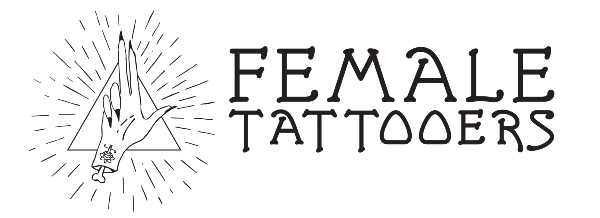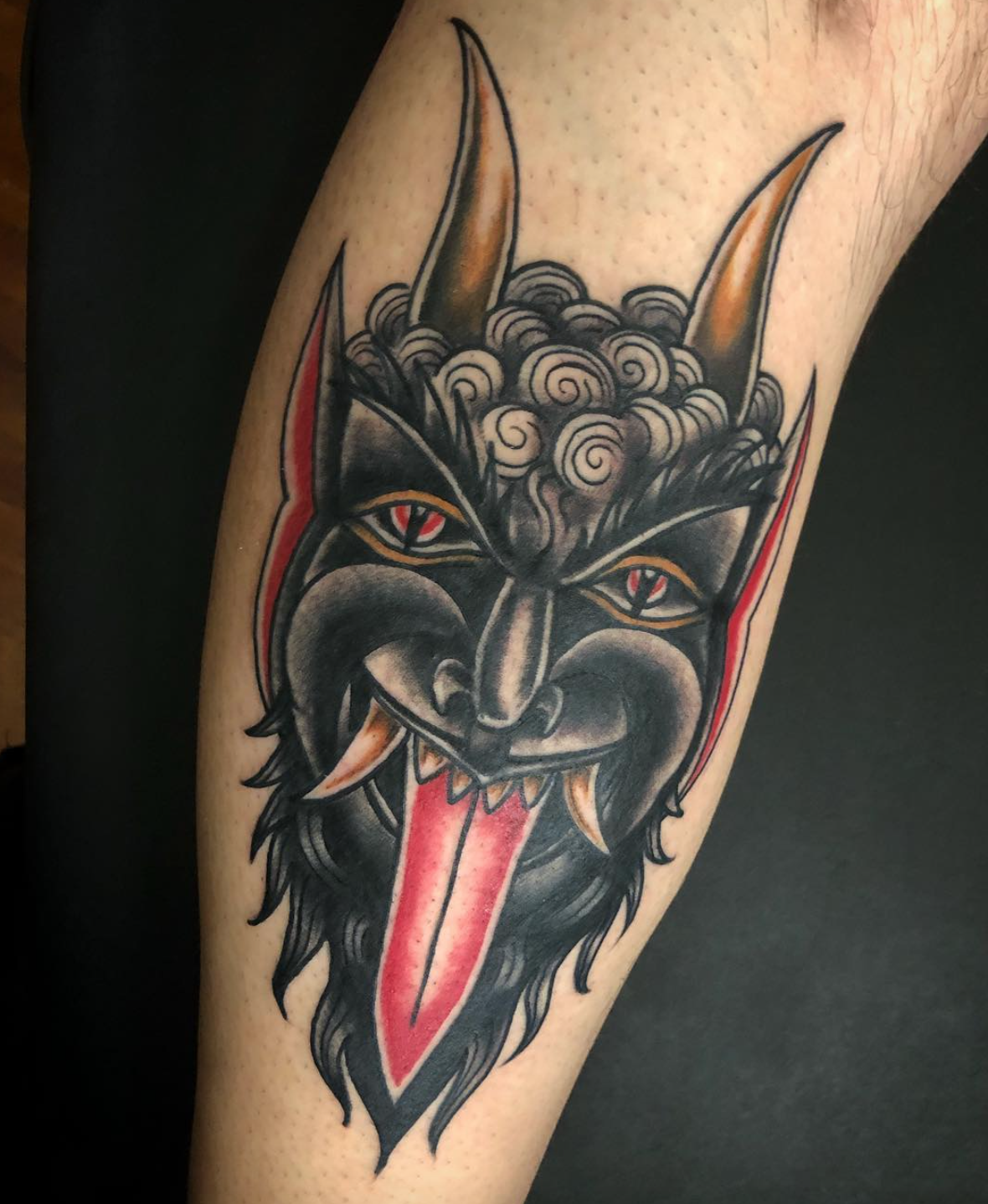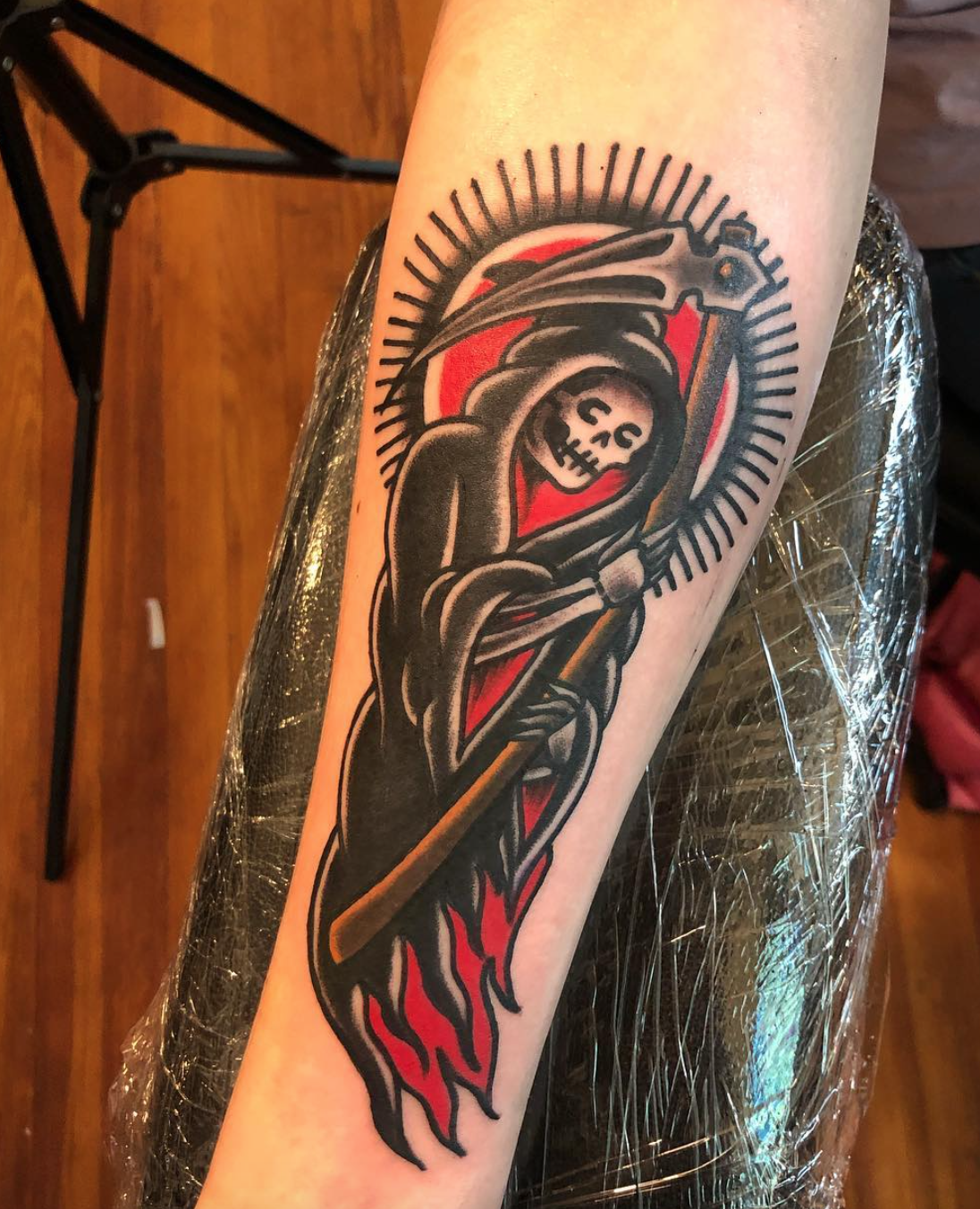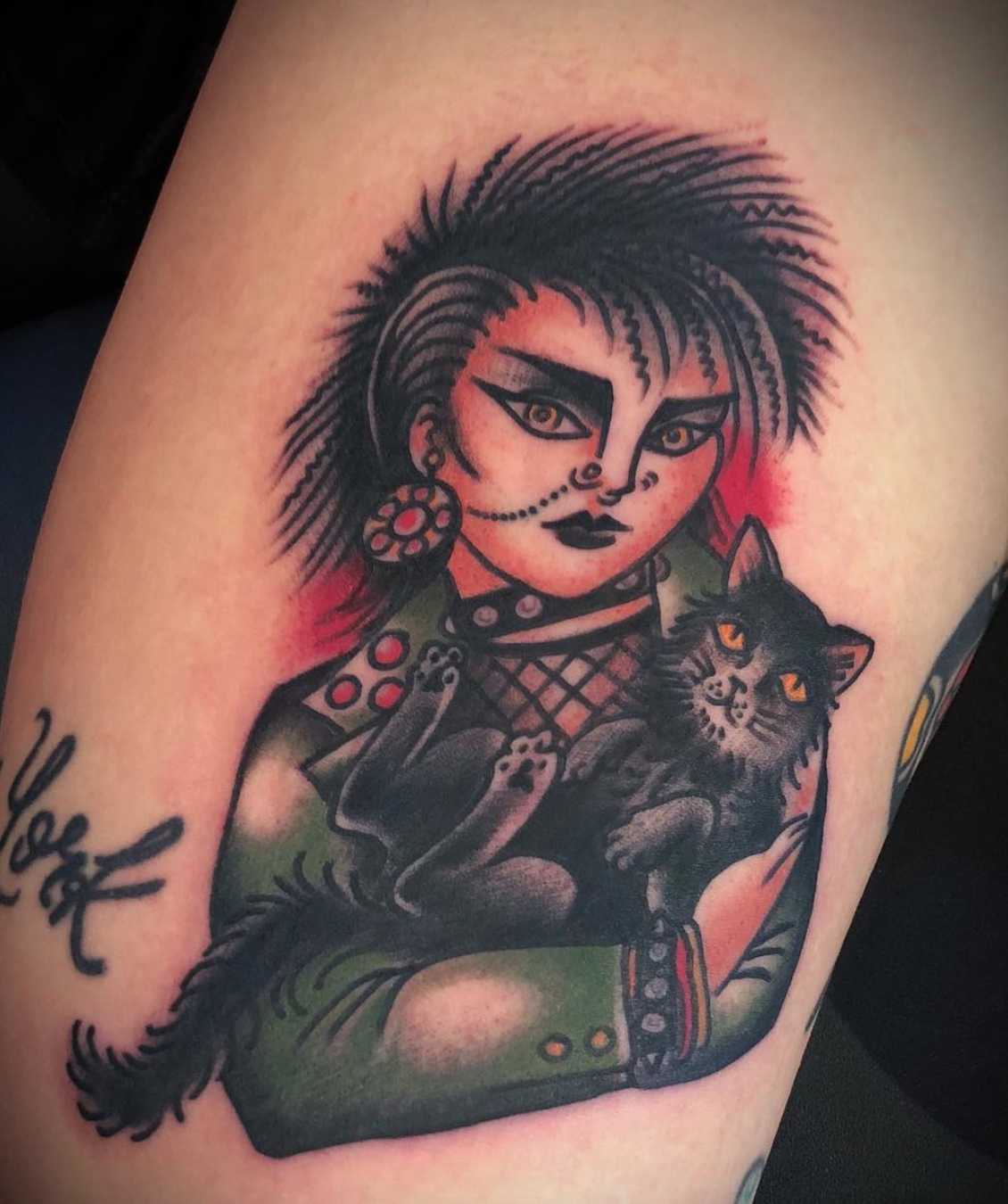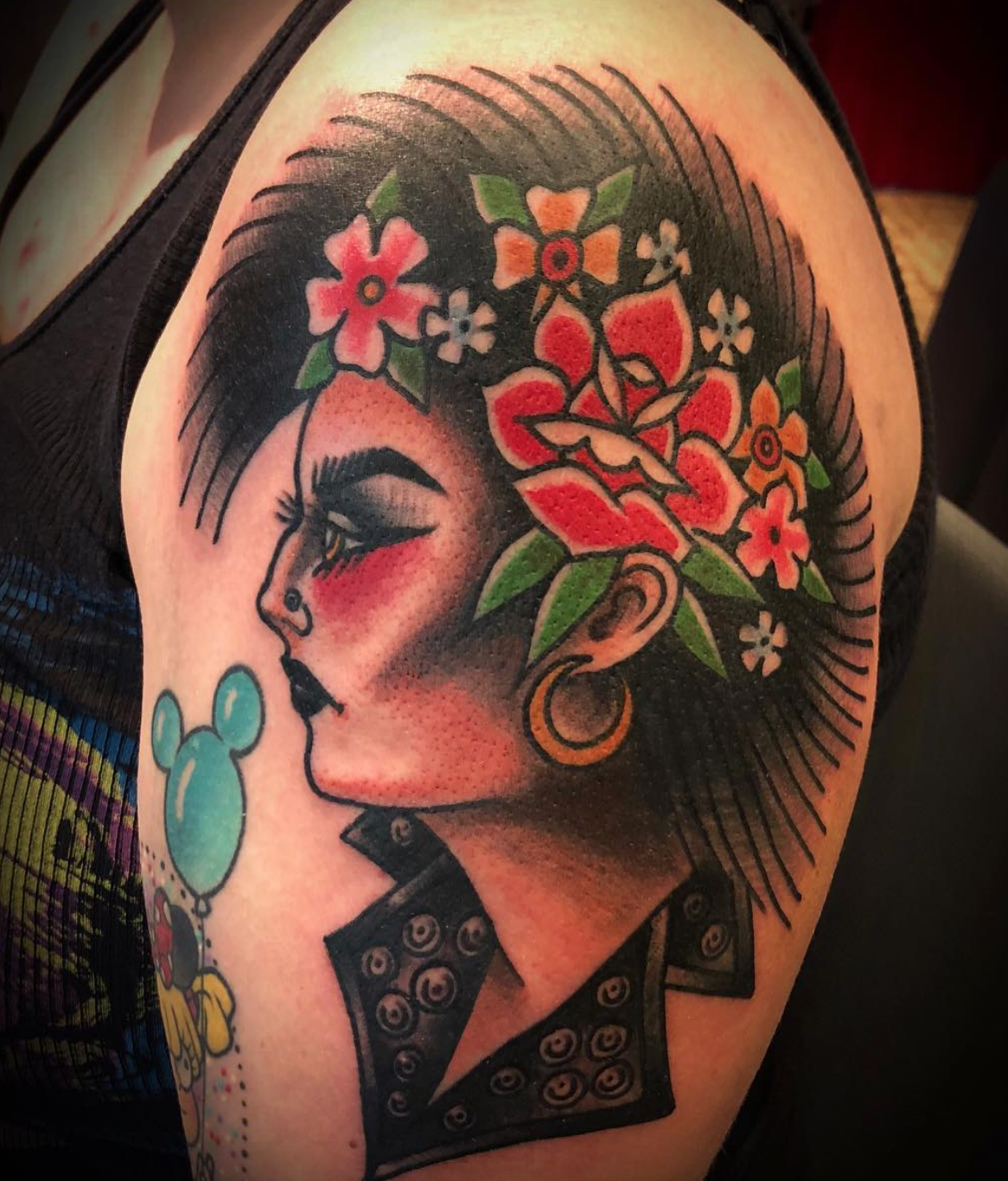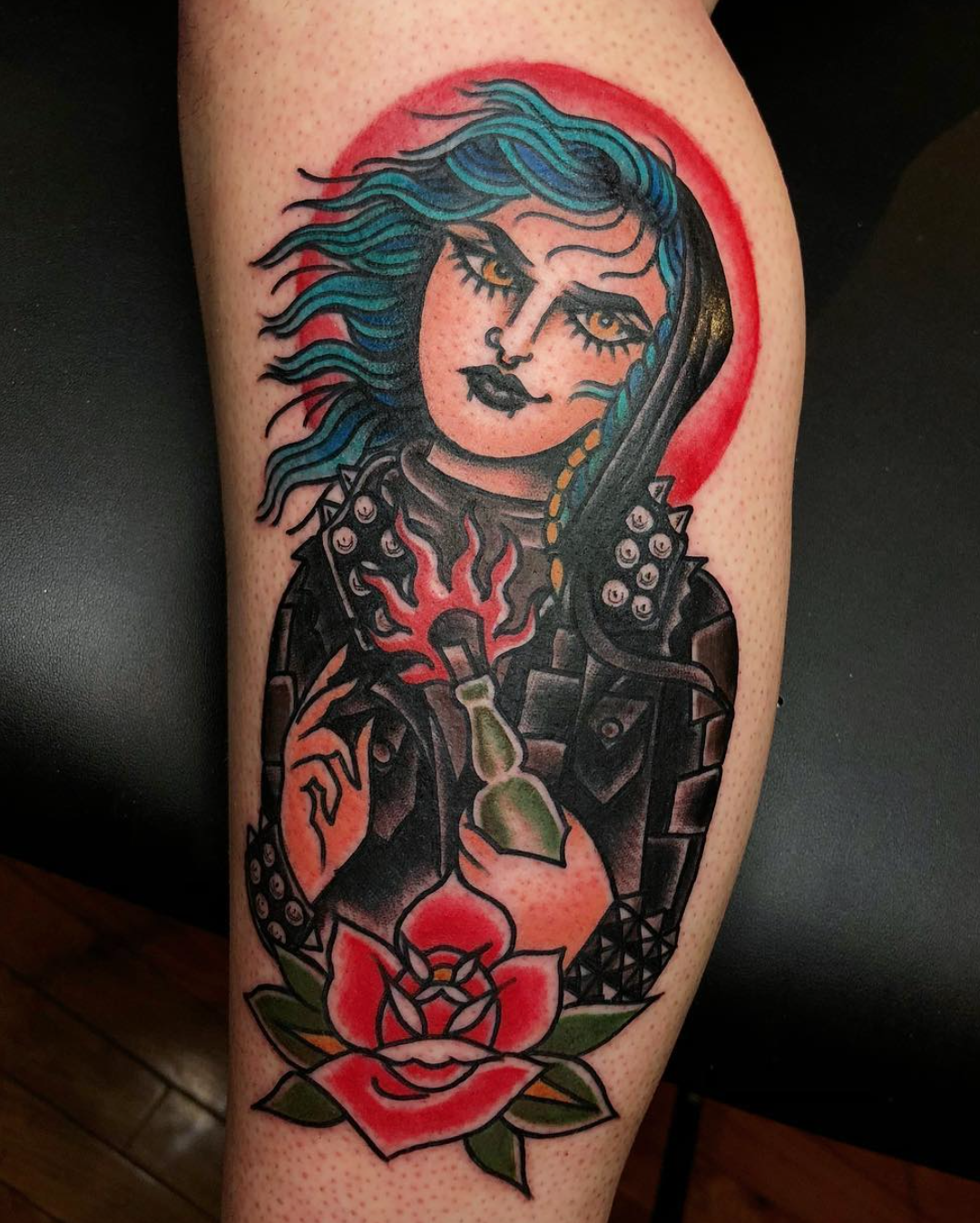Kate Collins: Putting a Punk-Rock Spin on Traditional Tattooing
When Philadelphia-based tattoo artist Kate Collins thinks back on her tattoo apprenticeship, she just laughs it off.
“I’m one of those tattooers that never really had an apprenticeship and desperately wanted one,” she says. “I was taught the basics and was on my own. When you have no cred—no one to lead you through this industry—starting at the very bottom is pretty hard.”
Collins bounced around early in her career and put in time at walk-in shops in the Mayfair section of Philadelphia and Texas. At a shop in Pflugerville, she finally received some technical education and advice when the seasoned artists encouraged to gather reference books and draw non-stop flash.
Tapping into Texas Traditional
Working in street shops, says Collins, helped her gain experience tattooing multiple styles early in her career. The clients dictated the majority of her work, and while it wasn’t always her cup of tea, Collins says it helped teach her versatility.
“Being in walk-in shops I always had to do different styles just to survive,” says Collins. “I think it’s important as an artist to see different perspectives, learn from different artists.”
But Collins quickly felt a draw to the bold, structured style of American traditional tattooing, inspired by historic flash.
“The old flash on the walls is still there for a reason,” she says. “Any time someone requested a solid traditional piece, everyone in the shop would fight over it. The limited pallet, sense of humor, raunchiness, and the instant gratification of being able to do a piece in 2 hours or less, all appealed to me.”
Today, Collins specializes in tattoos that pay homage to that tradition. At True Hand Tattoo in Philadelphia, a shop located in a converted church in the Fishtown section of the city, Collins produces solid, high-contrast pieces that would make any old-school tattooer do a double take.
But it’s her punk-inspired lady head tattoos that have helped Collins carve out a specialized niche in the crowded traditional space.
A Mix of Music and Tattooing
While Collins was still trying to learn the ropes in Texas, she relied heavily on music and a punk-inspired style to get her through hard times. “Before tattooing, all my time and energy went into punk rock,” she says. “I started playing around with punk imagery. It started to give me a different kind of attention. People started to actually take interest in my story.”
When Collins moved back to Philadelphia she even ran a music venue called Halfway House out of her basement. Big name bands, including Sham 69 and U.K. Subs, played there.
It was this heavy punk influence that prompted Collins to start experimenting with different versions of traditional lady head designs in her art and tattooing.
“Looking at all the old timers and studying their lady heads, I just couldn’t relate,” says Collins. “Most of those old lady head illustrations are inspired by silent film stars, pin up girls during the wars, and old flames. They have a very mainstream-friendly look to them, from a very basic man’s point of view. I wanted to make girls for girls.”
So Collins flipped the switch on tradition and went in a different direction. She started to make art that reflected the strong, renegade ladies who lived a punk-rock lifestyle.
“i started to think of the women who inspired me, who i thought were beautiful,” says Collins. “Girls with rough edges and unstable lives, scary, funny, bad makeup, ripped clothes—living in the moment by the minute.”
Collins says that punk music, in its history, has produced a lot of negative songs about women. So she challenged her friends to find positive tracks, that she then used as inspiration for her work.
Those pieces led Collins to release a one-of-a-kind flash book called “She’s the One” that features these rebel ladies. She sells the book with an accompanying mixtape of songs and it’s carried by a variety of tattoo book distributors. Shoppers can also find a copy in-store at Megan Massacre’s New York tattoo studio and boutique Grit N Glory.
Leaning on Fellow Female Artists
Despite the rocky and tough start to her now decade-long career, Collins says she finally feels at home working at True Hand in Philadelphia. That’s partly due, she says, to the other women artists who work at the studio, Cindy Vega and Amanda Leadman.
“I worked with them both years ago at a different shop, so it’s like a reunion,” says Collins. “Cindy is one of my best friends and has help me so much through the years.”
As a female artist, Collins has experienced plenty of criticism from male clients and tattooers alike. “I remember getting eye rolls and laughed at for even expressing interest,” she says. “A well-known name had nothing but awful things to say to me when I first started, trying to discourage me.”
But any negative energy simply pushed Collins to work harder. “I just knew if I kept my head down and pen to the paper, my work would speak for itself,” she says. “I surrounded myself with the good people and drowned out the bad. That’s what’s most important—finding those good people and lifting each other up.”
All images via Kate Collins on Instagram
